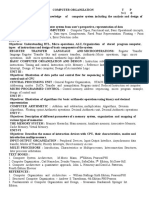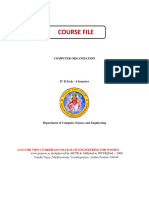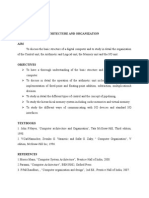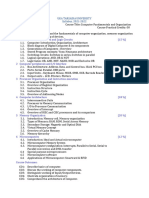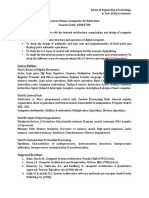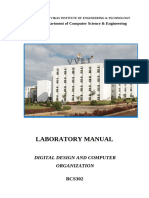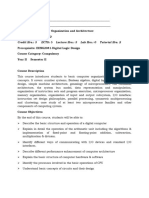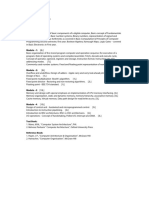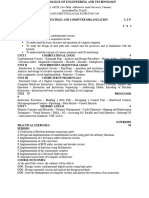0% found this document useful (0 votes)
18 views4 pagesCoa Syllabus Computer Science
The course aims to teach the basic structure and operations of computers, including logic gates and digital circuits. It covers Booth's Algorithm for multiplication, addressing modes, assembly language instructions, memory types, and I/O devices. Students will gain an understanding of memory hierarchies and data transfer modes.
Uploaded by
dpsocial0005Copyright
© © All Rights Reserved
We take content rights seriously. If you suspect this is your content, claim it here.
Available Formats
Download as PDF, TXT or read online on Scribd
0% found this document useful (0 votes)
18 views4 pagesCoa Syllabus Computer Science
The course aims to teach the basic structure and operations of computers, including logic gates and digital circuits. It covers Booth's Algorithm for multiplication, addressing modes, assembly language instructions, memory types, and I/O devices. Students will gain an understanding of memory hierarchies and data transfer modes.
Uploaded by
dpsocial0005Copyright
© © All Rights Reserved
We take content rights seriously. If you suspect this is your content, claim it here.
Available Formats
Download as PDF, TXT or read online on Scribd
/ 4



